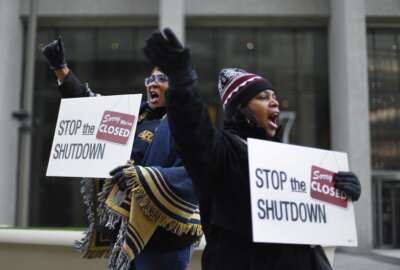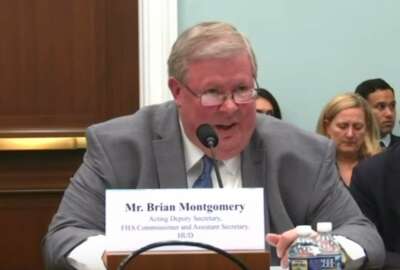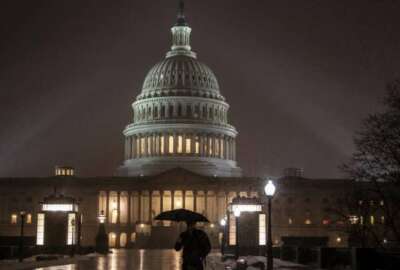

The Senate Homeland Security and Governmental Affairs' Permanent Subcommittee on Investigations has counted up the costs of the last three shutdowns.
Three government shutdowns over the past six years have cost taxpayers nearly $4 billion and nearly 57,000 lost years of productive time, according to a new Senate report.
With the deadline nearing to avoid another shutdown by the end of the fiscal year, the Senate Homeland Security and Governmental Affairs’ Permanent Subcommittee on Investigation earlier this week totaled the costs and productivity loses of the last three lapses in appropriations.
Agencies have spent roughly $3.7 billion paying furloughed federal employees for work they didn’t do during the last three government shutdowns, plus an additional $338 million in extra administrative work, lost revenue and late fees on interest payments.
The 35-day partial government shutdown earlier this year — by far — was the most expensive. Government spent roughly $2.6 billion on back pay for furloughed federal employees who didn’t work during the 2019 shutdown.
Lost productivity for the 2019 government shutdown, despite it being the longest lapse in U.S. history, fell short of the lost productivity estimate for the 2013 lapse.
The Senate subcommittee estimated lost productivity at about 25,301 years for 2019 partial shutdown, compared to 29,965 lost years during the fiscal 2014 shutdown, which lasted 16 days and impacted nearly all of government, including the Defense Department.
Agencies paid a high price for the fiscal 2018 government shutdown, which fell over a weekend in January and barely lasted three days. Government spent $68.2 million on back pay for furloughed federal employees during that time, and agencies lost an estimated 1,672 years in productivity for those workers, the subcommittee said.
These totals are likely much higher, because some of the largest agencies, including the departments of Agriculture, Commerce, Defense and Justice, couldn’t provide all or some data about recent shutdowns and their impacts, the subcommittee said.
The effects of the 2019 shutdown on agencies and their mission activities were wide ranging.
Justice, for example, canceled about 60,000 scheduled immigration hearings during the 2019 government shutdown.
The Securities and Exchange Commission, which was able to use available funding for three of the 35 days during the 2019 shutdown, was forced to stop regular compliance and inspections and suspended ongoing enforcement investigations.
The IRS, which eventually brought several thousand furloughed employees back to work to process tax returns and refunds during the 2019 shutdown, stopped most tax enforcement activities, which typically return $1 billion a week.
Plans to update the Alcohol and Tobacco Tax and Trade Bureau’s website has been pushed back to fiscal 2020. Website updates are part of the bureau’s implementation of the Tax Cuts and Jobs Act.
The 2019 government shutdown has forced the Federal Aviation Administration, whose air traffic controllers worked without pay and became one of the many public faces of the most recent lapse, to cut its hiring projections by 37%, the subcommittee said. 
NASA furloughed the vast majority of its workforce during the 2019 government shutdown. The agency’s mission support directorate stopped performing routine maintenance and inspections, which eventually led to $1 million in damage to facilities, the Senate subcommittee.
The Office of Personnel Management, which furloughed just 767 employees during the 2019 lapse, diverts most of its attention away from the agency’s routine activities and instead must develop and distribute guidance and information to support other agencies’ shutdown activities.
“These activities include developing
extensive written materials, responding to ‘hundreds of inquiries’ from agency
officials related to the technical aspects of furloughing employees and providing
ongoing support and information through frequent conference calls with
government human capital officers and human resource staff,” the Senate subcommittee’s report reads. “These activities prevent HR policy specialists from performing their normal work, which includes providing policy direction and
leadership in designing and developing government-wide human capital strategy,
systems and programs. Additionally, these employees are unable to provide
support to federal agencies regarding recruitment, hiring policy, veterans’
employment, strategic workforce planning, performance management, diversity
and labor and employee relations.”
The length of the most recent government shutdown forced OPM to respond to questions on federal health insurance programs and administrative leave that it likely had often covered.
In addition, OPM delayed 20 full and follow-up suitability inspections during the 2019 shutdown. Some of those inspections may be postponed until fiscal 2020, the agency told the subcommittee.
The Department of Homeland Security, the largest agency impacted by the 2019 government shutdown, lost a staggering 3,132 years of employee productivity during the most recent lapse.
DHS estimated the costs of the 2019 shutdown at more than $432 million. And though a vast majority of the department’s workforce must continue to work without pay, the department noted a wide variety impacts, which included “substantial delays in hiring, prolonged onboarding of personnel and backlogs across operating components, diminished readiness of forces and assets;, delays in the implementation of new strategies that have pushed deadlines into future fiscal years and a delay in momentum with both internal staff and external stakeholders,” according to the report.
In addition, DHS’ “e-Verify” system was offline during the shutdown, meaning the department can’t take adverse actions against employees whose eligibility can’t be confirmed without the system, the subcommittee said.
Components noted other effects. The Coast Guard’s Maritime Center, for example, delayed the review and approval of 11,000 merchant mariner credentials and paused the approval of 650 mariner examinations.
Copyright © 2025 Federal News Network. All rights reserved. This website is not intended for users located within the European Economic Area.
Nicole Ogrysko is a reporter for Federal News Network focusing on the federal workforce and federal pay and benefits.
Follow @nogryskoWFED



